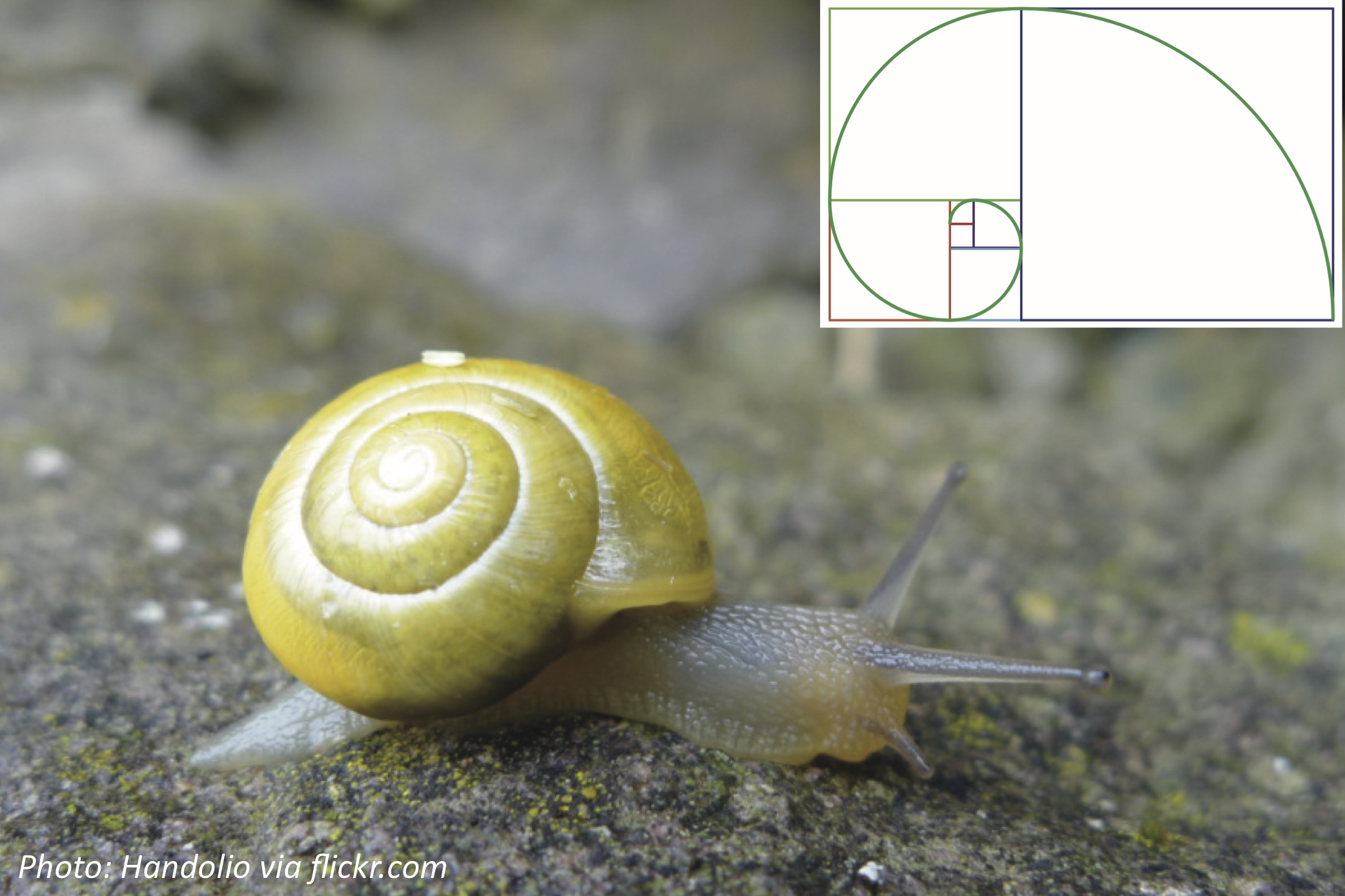Snails may be slow, but their cool spiral shells use math! If you draw 2 equal squares right next to each other, and then a square up against them that’s as wide as those 2 squares together, and you keep adding bigger squares…you can connect their corners to draw a snail spiral. Each square’s edge equals the last 2 edges added together, giving you 1, 1, 2, 3, 5, 8, 13, 21…These are called the Fibonacci numbers. The bigger the snail, the bigger the spiral — but the snail might not be any speedier.
Wee ones: Can you find a spiral shape in your room? If not, try rolling a hair ribbon, shoelace, belt, or thin sock into a spiral.
Little kids: If a snail can move only 3 inches per minute, how far can your pet snail travel in 2 minutes? Bonus: Who can go farther, a 2-inch-per-minute snail in 4 minutes, or a speedy 6-inch-per-minute snail in 1 minute?
Big kids: As you look at that string of numbers — 1, 1, 2, 3, 5, 8, 13, 21– what should the next number be? Bonus: How often do even numbers pop up, and why?
Answers:
Wee ones: Try to find a spiral or make one!
Little kids: 6 inches, which is only about as long as your hand! Bonus: The 2-inch-per-minute snail, who will travel 8 inches.
Big kids: 34. Bonus: Every 3rd number is even. Each even is added to the odd number before it to make an odd, and that new odd number is added to the even to make the next, which will have to be odd. Then you finally have 2 odds in a row to add up to an even, and you start all over!



